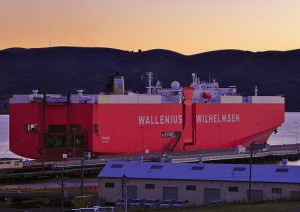Roll On/Roll Off (RO/RO) Shipping

RoRo Shipping
Cars and other vehicles that are driven on board a RO/RO vessel are parked and secured in large multi-level parking decks. Vehicles are parked in specifically marked lanes on the parking deck. RoRo vessels can easily transport between 200 to 300 cars per load, and have sometimes been likened to floating parking garages. Roll-On/Roll-Off vessels that only transport cars are known as ‘Pure Car Carriers,’ while vessels that carry both cars and trucks are commonly referred to as ‘Pure Car Truck Carriers.’
Popular Alternative to Container Shipping
Over the years, RO/RO shipping has emerged as a popular alternative to containers for transporting cars and other vehicles by sea. Much of the popularity has to do with that fact that RoRo services are typically substantially cheaper than container shipping services. In some cases, the difference in shipping costs can range between 40 percent and 60 percent. Many consider RoRo shipping to be somewhat less secure compared to container shipping. Even so, many people, including car manufactures, use these services because of the enormous cost benefits. Almost all major international container shipping companies offer RoRo services these days.
How RoRo Shipping Costs Are Computed
Roll-on/Roll-off shipping companies base their shipping prices on the size of the vehicle that is being shipped. Bigger vehicles cost more to ship compared to smaller vehicles. In order to arrive at the ocean freight rate, the Roll-on Roll-off carrier service will consider the total volume of space occupied by the vehicle as measured in cubic feet. The carrier then multiplies the volume by its ocean freight rate per cubic foot to arrive at a base shipping cost for the vehicle. The Roll On/Roll Off shipping company will then add all relevant surcharges, such as the Bunker Adjustment Factor (BAF) and the Cost Adjustment Factor (CAF), to determine the final shipping cost.


